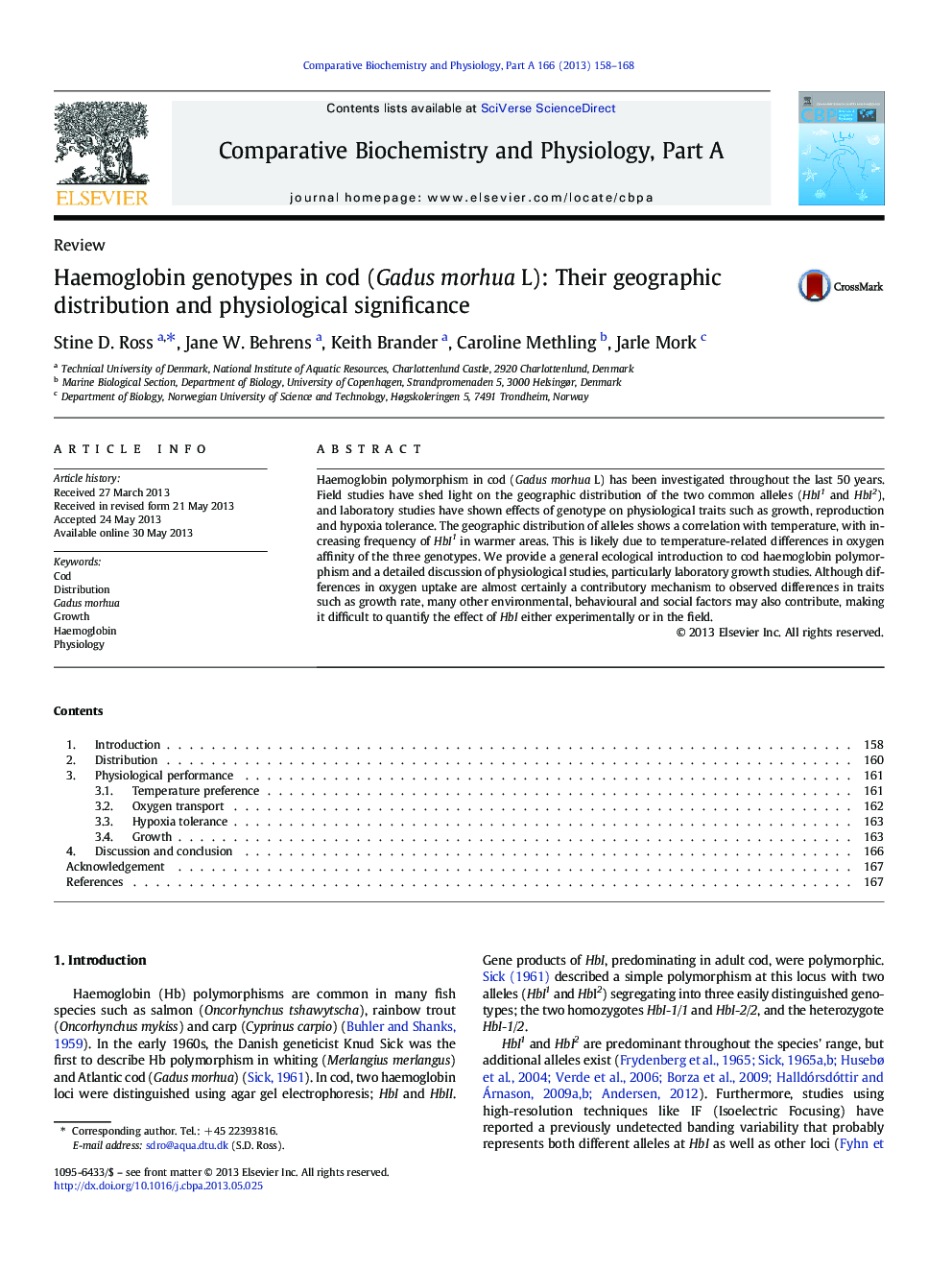| Article ID | Journal | Published Year | Pages | File Type |
|---|---|---|---|---|
| 10818890 | Comparative Biochemistry and Physiology Part A: Molecular & Integrative Physiology | 2013 | 11 Pages |
Abstract
Haemoglobin polymorphism in cod (Gadus morhua L) has been investigated throughout the last 50Â years. Field studies have shed light on the geographic distribution of the two common alleles (HbI1 and HbI2), and laboratory studies have shown effects of genotype on physiological traits such as growth, reproduction and hypoxia tolerance. The geographic distribution of alleles shows a correlation with temperature, with increasing frequency of HbI1 in warmer areas. This is likely due to temperature-related differences in oxygen affinity of the three genotypes. We provide a general ecological introduction to cod haemoglobin polymorphism and a detailed discussion of physiological studies, particularly laboratory growth studies. Although differences in oxygen uptake are almost certainly a contributory mechanism to observed differences in traits such as growth rate, many other environmental, behavioural and social factors may also contribute, making it difficult to quantify the effect of HbI either experimentally or in the field.
Related Topics
Life Sciences
Biochemistry, Genetics and Molecular Biology
Biochemistry
Authors
Stine D. Ross, Jane W. Behrens, Keith Brander, Caroline Methling, Jarle Mork,
